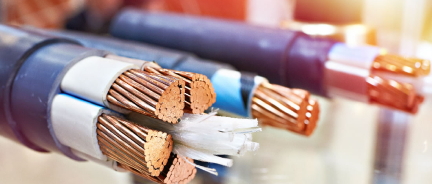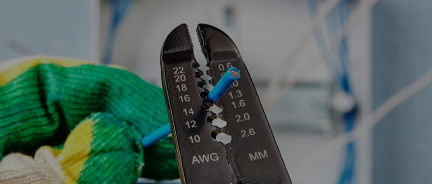EV Cables vs. Regular Automotive Wire: An Overview
EV Cables vs. Regular Automotive Wire: An Overview

Mass transitioning from conventional cars to hybrid and electric cars means transitioning to new types of electric cables. Cables used in electric and hybrid vehicles are different from the cables found in conventional ICE cars. Read this blog to settle the confusion between traditional and electric vehicles' types of cables.
Automotive wire: Primary Wire vs. Battery Cable
Two subtypes of automotive wire used in conventional ICE cars are automotive primary wire and battery cables.
Automotive primary wire is the general-purpose automotive wire suitable for a whole range of different applications in conventional vehicles. Automotive primary wire is used in wire harnesses, engines, and car lighting of all types.
Types of Automotive Primary Wire
- Premium XLPE-insulated wire: GXL, SXL, TXL. These wire types have a -40°C to 125ºC temperature range. The difference between them is in wall thickness.
- Accessible PVC-insulated wire: GPT, TWP, HDT. These have lower temperature rates, with GPT and TWP at 85ºC, and HDT at 105ºC.
Types of Battery Cables For ICE Vehicles
Battery cables are a subtype of automotive wire used exclusively to power the electrical system of the conventional car and collect the battery to the electrical system. These cables are of a heavier weight than the primary automotive wire.
SGT vs. SGX Cable
The two types of battery cables for conventional cars are SGT and SGX. The difference between them is that SGT has a temperature rating of-40°C to +105°C and PVC insulation, while SGX has a temperature rating of -40°C to +125°C and XLPE insulation.
EV Cables: High-Voltage Cables and Charging Cables
Two types of cables associated with electric vehicles are high-voltage cables found inside the electric car in wire harnesses and a charging cable that is used to charge a car. While both are EV cables, the term EV cable usually indicates a charging cable, as regular car drivers do not deal with HV vehicles inside the wire harness much.
High-voltage cables in electric cars are found inside wire harnesses of electric vehicles. They are used to connect the ports, for inner wiring, engine, and powering the vehicle.
!Only high-voltage EV cables are used in an electric car, as regular primary automotive wire and battery cables have no place there.!
Charging EV cables are the ones that every electric car owner deals with. The two subtypes of these cables are type 1 and type 2. The one you need to pick up depends on the type of car that you own. You can find more information about EV charging cables in this blog.
For all kinds of car wiring, visit Nassau National Cable.

















